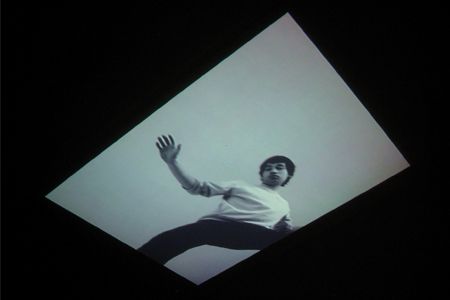As part of my MA Art Psycotherapy course it’s mandatory for me to be undertaking some of form of therapy myself. So for the past fortnight I’ve been trawling the internet trying to find someone to work with. Fortunately the University were able to provide me with guidelines that have helped me to generate a shortlist of 4 therapists working within Berkshire and the surrounding areas. I’m hoping to have this sorted out before the start of the course in a week’s time.
Archives
Retrospectively it’s great how keeping a blog allows you to compile your thoughts in an orderly way whilst also being able to draw out important themes, ideas or questions. Following on my from my last post I’d been thinking a lot about this idea of art as vocation and how it might contribute to one’s overall sense of well being. Incidentally the start of this blog also coincides with the beginning of a new school term and a return to work. Seeing as we had some inset day training booked at a remote location in Reading (away from the school) I figured that the longer commute in might provide an opportune time to listen to a few podcasts. Something that particularly caught my attention was a talk entitled Visual Art Workspaces and Contemporary Art Making, part of the MoMA Talks: Conversations series 2010. Amidst these discussions Diane Espaldon cites Tom Hodgkinson (editor of the Idler and The Freedom Manifesto) who sums up this concept of vocation brilliantly…..
‘A career is an arc that stretches out ahead of you with an ever-vanishing point at the end. Hodgkinson says what we should be seeking instead is our vocation. He describes it as a calling, a task that earns you a living and enjoy doing. Vocation is a community-based idea of work; a giving experience. Vocation; according to Hodgkinson, is steady and flat and you never have to retire from it beacuse it’s who you are.’
http://www.moma.org/explore/multimedia/audios/181/1952
Weirdly I’d find myself thinking back to this blog quite frequently during the next few days as most of my inset day training comprised of an introduction to Neuro Linguistic Programming (NLP). Neuro-Linguistic Programming is an approach to communication, personal development and psychotherapy created in the 1970s. The title refers to a stated connection between the neurological processes, language, and behavioral patterns that have been learned through experience and can be organized to achieve specific goals in life. Granted this isn’t something you’d expect to learn about on a teacher training day though it was nonetheless an interesting precursor to my MA Art Psychotherapy course. What particularly interested me was a session on limiting beliefs and empowerment. Whilst this training was intended for the class setting, my thoughts turned to my role as an artist and the limits I’d put on my practice, whether it be my investment of time, energy or even allowing space to work. Initially I started to wonder whether I needed a studio space, to be around other artists or if I needed to be more determined in seeking out opportunities to show my work publicly. Fortunately the training also identified a way of testing these beliefs through what it called the logical levels of change (see below).
Mission/ Spirituality – For what purpose am I doing this?
Identity – Who am I? How do I see myself?
Beliefs/ Values – Why am I doing this?
Capability – How can I do this next task?
Behaviour – What do I need to do?
Environment – Where am I? When am I doing this?
Whilst I’m not completely sold on the merits of NLP; and even writing about it here sounds a little New Age, it did nonetheless give me the encouragement to think about my art practice and ways of taking it forward. Like other artists I’d be the first to admit that I’ve made concessions and lost the creative vigour and discipline I had as an undergraduate student. Although maybe the creation of this blog marks a step in the right direction.
“Find something you love to do, and you’ll never work a day in your life” – Harvey MacKay
In the latter stages of last year I decided that I wanted to find a middle ground between what I was doing as a job – working with challenging young people in schools, and combining this with the skills I’d acquired as an artist. Evidently I’ve never got the balance quite right as what I consider to be my art practice often feels very insular whereas my working life; by comparison, doesn’t really offer the scope for creative expression and takes up a greater proportion of my time. Whilst artists regularly juggle jobs with their artistic practice I often wondered whether their was a job that was robust enough to combine both of these interests without having to feel as though I’m serving two masters. Subsequently I had explored other options such as fulltime youth work and teaching (by way of a PGSE or GTP qualification). I also considered training to become a councillor although none of these ideas had any lasting appeal.
Perhaps what I’m thinking of is more a vocation than simply just another job. Being in a place where my skills, talents and interests intersect naturally rather than trying to force them together or oppositely keeping them separate as they are at the moment.
In many ways I hope that achieving this qualification and becoming an accredited art therapist would be more in sync with what I do as an artist. However it would be worth talking to other artists – who’ve trained as art therapists, to decipher how they’ve negotiated these dual roles. Alternatively how might being an art therapist negate one’s position as an artist in their own right?

